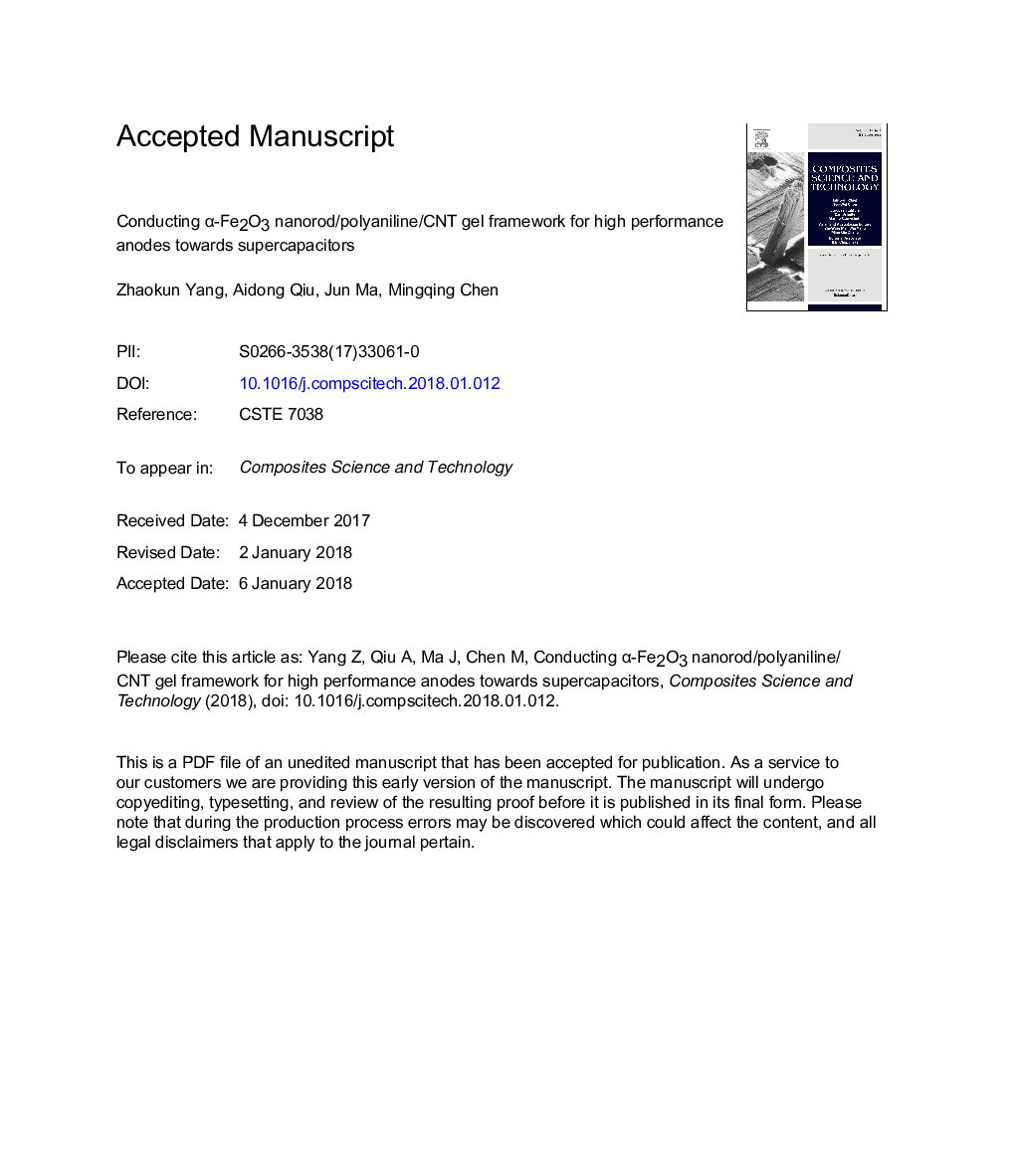| Article ID | Journal | Published Year | Pages | File Type |
|---|---|---|---|---|
| 7214756 | Composites Science and Technology | 2018 | 22 Pages |
Abstract
Thick-electrode design toward high energy density per device is of particular importance for supercapacitors to store large amount of energy, but this remains a seemingly insurmountable challenge due to sluggish electron transport. The challenge is addressed herein by developing an electrically and ionically conducting framework which consists of α-Fe2O3 nanorods, multi-walled carbon nanotubes (CNTs) and polyaniline (PANi) hydrogel. The interconnecting composite framework is formed by in situ polymerizing aniline on the surface of α-Fe2O3 nanorods and CNTs; the nanorods are found to well disperse in the matrix. The framework can provide low-resistance, continuous transport pathways for both electrons and electrolyte ions in the entire electrode system, maximizing the energy use of the nanorods. An anode of â¼100â¯Î¼m in thickness is fabricated using the composite framework, corresponding to a mass loading of 9.3â¯mgâ¯cmâ2. It delivers high area capacitance of 2434.7â¯mFâ¯cmâ2 and cycling capacitance retention of 96.3% after 10,000 cycles. This work would shed light on the design of thick electrodes toward high-capacity energy storage devices.
Related Topics
Physical Sciences and Engineering
Engineering
Engineering (General)
Authors
Zhaokun Yang, Aidong Qiu, Jun Ma, Mingqing Chen,
